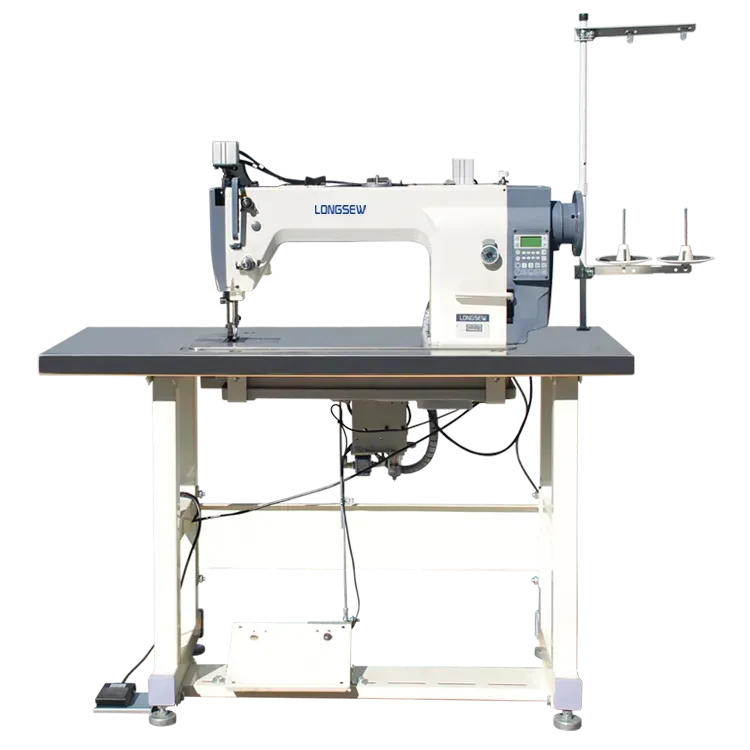The Advantages of Using Automatic Bag FIBC Sewing Machines Over Manual Stitching
In the world of industrial packaging, FIBC (Flexible Intermediate Bulk Containers), often referred to as bulk bags, play an essential role in the transportation and storage of bulk materials. These bags are widely used in industries such as agriculture, chemicals, construction, and food production. The manufacturing of FIBC bags requires precision, durability, and efficiency, all of which are critical to ensuring that the bags are capable of withstanding heavy loads and harsh conditions. Traditionally, FIBC bags were sewn manually, a process that was time-consuming and labor-intensive. However, with the advent of automatic bag FIBC sewing machines, the manufacturing process has undergone a significant transformation. This essay will explore the advantages of using automatic FIBC bag sewing machines over manual stitching.

Bag FIBC Sewing Machines: Increased Speed and Efficiency
One of the primary advantages of using FIBC sewing machine is the significant increase in production speed. Manual stitching requires operators to sew each bag by hand, a process that can be slow and prone to human error. In contrast, automatic sewing machines can complete the same task in a fraction of the time. These machines are designed to sew multiple bags continuously without the need for constant supervision, reducing downtime and enhancing overall productivity. This boost in efficiency is especially crucial in industries where demand for FIBC bags is high, and fast turnaround times are essential for meeting customer needs.
Automatic FIBC sewing machines can stitch thousands of bags in a day, which would be nearly impossible with manual labor. By automating the sewing process, manufacturers can meet large-scale production targets without sacrificing quality or consistency.
Bag FIBC Sewing Machines: Improved Consistency and Quality Control
Manual stitching relies heavily on the skill and experience of the operator, which can vary from one worker to another. As a result, the quality of the stitching can fluctuate, potentially leading to inconsistencies in the final product. On the other hand, FIBC bag producing line is programmed to sew each bag with precise, uniform stitches. These machines can be calibrated to ensure that the stitching meets specific standards, resulting in a high level of consistency across all bags produced.
Moreover, the automatic machines can detect errors, such as skipped stitches or thread breakage, and automatically correct them. This reduces the chances of defects that could compromise the strength and durability of the FIBC bags. The ability to maintain high-quality standards throughout the production process enhances the reliability of the bags, which is especially important in applications where the bags are subjected to heavy loads or extreme conditions.
Bag FIBC Sewing Machines: Flexibility and Customization
Automatic FIBC sewing machines offer flexibility in terms of customization. These machines can be adjusted to sew different types and sizes of bags, enabling manufacturers to produce a wide range of FIBC sewing machine head with varying specifications. Whether the bags need to be reinforced, feature specific closure types, or be made with different materials, automatic sewing machines can be easily reconfigured to meet these requirements. This versatility is essential for manufacturers looking to serve diverse markets or fulfill customized orders.
In conclusion, the advantages of using FIBC bag sewing machinery over manual stitching are clear. These machines provide increased speed, efficiency, and consistency, while also contributing to significant cost savings in the long term. By reducing the reliance on manual labor, automatic machines help create safer, more productive working environments. Moreover, they offer the flexibility and precision needed to meet the diverse needs of the FIBC bag manufacturing industry. As the demand for high-quality, durable bags continues to grow, the adoption of automatic FIBC sewing machines is likely to become even more widespread, offering a competitive edge to manufacturers who embrace automation in their production processes.
-
Leather Sewing Machine: The Industrial Standard for Tough MaterialsNewsJul.18,2025
-
Sail Making Machine: Heavy-Duty Stitching for Industrial and Marine NeedsNewsJul.18,2025
-
Sling Sewing Machine: The Backbone of Heavy-Duty FabricationNewsJul.18,2025
-
Leather Sewing Machine: Precision for Heavy-Duty StitchingNewsJul.18,2025
-
Big Bag Sewing Machine: Powering the Future of Bulk PackagingNewsJul.18,2025
-
FIBC Sewing Machine: Essential Equipment for Bulk Bag ProductionNewsJul.18,2025
-
Heavy Duty Leather Sewing Machine: A Must-Have for Professional LeatherworkNewsMay.28,2025





























